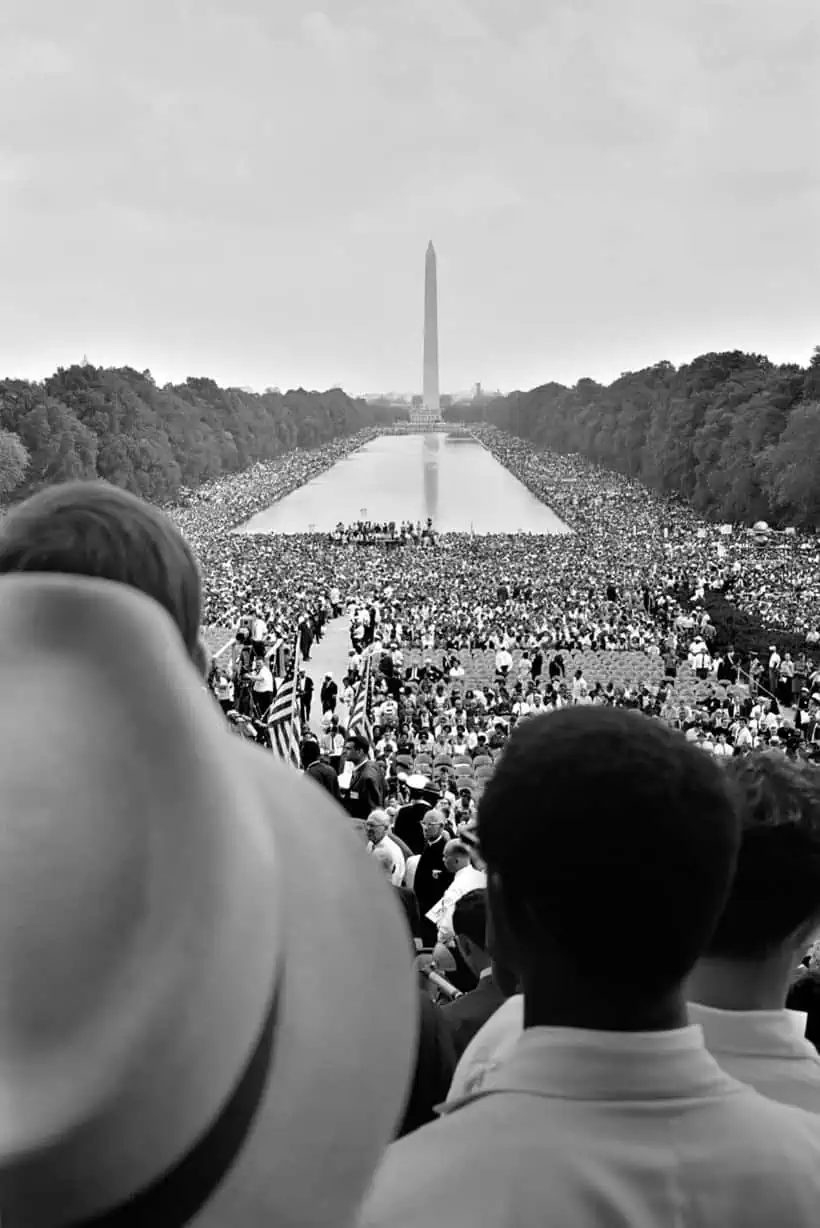Welcome to our comprehensive guide on the Civil Rights Act of 1957, a cornerstone of American civil rights legislation. Whether you’re a student, an entry-level job seeker, or simply someone interested in understanding the historical contexts that shape today’s workplace diversity, this guide is for you. The Civil Rights Act of 1957 marked a pivotal moment in the fight for equality and justice in the United States, setting in motion a series of legal and societal changes that continue to impact our lives today.
As you begin your career journey, understanding the roots of diversity and inclusion within the workplace is crucial. This guide aims to shed light on the Civil Rights Act of 1957 – its origins, key provisions, impacts, and how it connects to the broader civil rights movement. We’ll explore its legacy and relevance to current issues of diversity, equity, and inclusion in employment.
Through this exploration, you’ll gain insights into the challenges and triumphs of the civil rights movement, empowering you with a deeper appreciation of the ongoing struggle for equality. Furthermore, we hope to inspire you to become an advocate for change, leveraging your understanding to foster more inclusive environments wherever you go. Let’s dive into the history, significance, and enduring impact of the Civil Rights Act of 1957. This journey is not just about looking back; it’s about moving forward with the lessons we’ve learned to create brighter, more inclusive futures for everyone.
The Birth of the Civil Rights Act of 1957
The Civil Rights Act of 1957 marked a crucial turning point in America’s history. This legislation was introduced as a response to the daunting challenges that African Americans faced in exercising their voting rights. So, let’s take a moment to understand the birth of this pivotal act.
Background and Need
In the years following World War II, the issue of civil rights became increasingly prominent. Despite the efforts of African Americans and their allies, many faced barriers when trying to vote, especially in the South. Against a backdrop of segregation, intimidation, and violent acts by opponents of racial equality, the need for federal legislation became apparent.
Also, other minority groups began to voice out, illustrating a collective push towards a more inclusive America. For a detailed picture of these times, reading about the Evolving Civil Rights Landscape sets the stage for understanding the significance of the Civil Rights Act of 1957.
The Introduction of the Act
President Dwight D. Eisenhower, recognizing the systemic barriers in place, took a historic step by proposing the Civil Rights Act of 1957. This move was not without its challenges, facing opposition within Congress and among various states’ political leadership. However, the act’s passage showcased a recommitment to the principles of democracy and the protection of voting rights for all citizens.
Legislative Milestones
Before this act, comprehensive civil rights legislation had not been passed since the era of Reconstruction. The Civil Rights Act of 1957 broke this long hiatus, becoming the first act to protect and restore African Americans’ voting rights. It also led to the creation of the Civil Rights Division in the Department of Justice, empowering it to enforce civil rights laws.
Furthermore, this act laid the groundwork for subsequent legislation, including the Civil Rights Acts of 1964 and 1968, which would further dismantle the legal structures of segregation and discrimination. The passage of the Civil Rights Act of 1957 was not just a legislative success but a beacon of hope. It signified a federal acknowledgment of the injustices plaguing America and a firm step towards dismantling them. As we reflect, it’s clear this act did not just arise in a vacuum. It resulted from resilient advocacy, crucial societal shifts, and a collective yearning for justice and equality across America.
Context and Struggles Leading to the Act
Before the Civil Rights Act of 1957 became law, the journey for equal rights faced many hurdles. This era was marked by social unrest as activists and ordinary citizens alike fought for the acknowledgment of their rights. Understanding this context is crucial for grasping the full significance of the legislation.
The Social Climate
The 1950s were a time of significant societal shifts. In the wake of World War II, there was a growing awareness and push against the injustices faced by African Americans and other minorities. However, this period was also rife with resistance against change. Segregation laws, known as Jim Crow laws, were deeply embedded in many states, maintaining racial segregation and inequality.
This resistance wasn’t just systemic. Instances of violence against activists and Black citizens underscored the dangers associated with the fight for equality. Despite these dangers, movements like the Montgomery Bus Boycott showcased the power of nonviolent protest and the deep-rooted desire for change.
Legal Battles and Landmark Decisions
The fight for civil rights also played out in the courts. Before 1957, landmark cases such as Brown v. Board of Education challenged the legal foundations of segregation, paving the way for further legal battles. In this case, the Supreme Court’s decision declared state laws establishing separate public schools for Black and white students unconstitutional, setting a precedent for equality.
The struggle wasn’t limited to African Americans. Other minority groups also faced discrimination and fought for their rights, contributing to a broader understanding of civil rights. The Northeastern United States’ significant contributions to the civil rights movement highlight the diverse fronts on which these battles were fought.
The Push towards Legislation
Amid growing civil unrest and the increasing visibility of the civil rights struggle, pressure mounted on the federal government to act. The sheer bravery of those participating in protests and strategic legal challenges underscored the urgent need for comprehensive federal legislation to address the systemic denial of rights.
The momentum built by these concerted efforts created a fertile ground for introducing the Civil Rights Act of 1957. Notably, the act emerged from the struggles of those it aimed to protect and, through the work of allies across racial and political lines, illustrated the widespread recognition of the need for change.
For more insights into the transformative legal decisions of this era, visiting the History Channel’s Civil Rights Movement timeline provides an enriched understanding of the pivotal moments leading up to the act. The context and struggles leading to the Civil Rights Act of 1957 remind us that social change results from persistent efforts, legal battles, and the courage of those who dare to stand up for justice. This backdrop sets the stage for appreciating the significance of the legislation and the changes it sought to implement.
Key Provisions of the Civil Rights Act of 1957
The Civil Rights Act of 1957 was groundbreaking. For the first time, the federal government took action to protect the voting rights of African Americans. This act laid the foundation for future civil rights legislation.
Creating the Civil Rights Division
The act established the Civil Rights Division in the Department of Justice. This was a huge step. Now, there was a federal body dedicated to enforcing civil rights legislation.
Commission on Civil Rights
Secondly, it set up the Commission on Civil Rights. The commission had the power to investigate violations of civil rights. Thus, it shone a light on injustices.
Protecting Voter Rights
Most importantly, it aimed to ensure that all citizens could register to vote. It did this by providing federal oversight of voter registration. However, its impact was limited. States found ways to circumvent these protections.
The Civil Rights Act of 1957 was a Bold Move
Despite its limitations, it showed federal commitment to civil rights. It set the stage for more comprehensive laws in the 1960s. Accordingly, it wasn’t just an act; it was a promise of more progress to come. It also reminded everyone that the fight for equality was far from over.
Fortunately, the act did not stand alone. Later acts built on its foundation, making stronger protections against discrimination. The Civil Rights Act of 1957 was a stepping stone. It was the beginning of a long journey towards equality. Hence, while not perfect, its passage was a victory. It demonstrated the power of activism and political will. The Civil Rights Act of 1957 mainly focused on voter rights and enforcement. Although it faced challenges, it was a critical first step in the right direction. Understanding the key provisions of the Civil Rights Act of 1957 allows us to appreciate its role in the broader civil rights movement. It wasn’t just about laws but about changing society for the better.
Impact and Limitations of the Act
The Civil Rights Act of 1957 had both immediate and long-term effects. It was a vital step towards equality but faced significant limitations.
Immediate Impact
The creation of the Civil Rights Division and the Commission on Civil Rights were crucial developments. They provided tools for the federal government to address civil rights violations. This move was symbolic, showing a commitment to tackling racial discrimination.
Addressing Voter Suppression
Although the act aimed to protect voter rights, its impact was limited by states’ resistance. Many states continued practices that suppressed minority votes. Yet, this act brought national attention to these issues, setting the stage for more robust legislation.
Long-term Effects
In the long run, the Civil Rights Act of 1957 paved the way for future civil rights advancements. It laid the groundwork for the Civil Rights Act of 1964 and the Voting Rights Act of 1965. These laws would offer stronger protections against discrimination.
Challenges and Criticisms
Despite its intentions, the act was criticized for not going far enough. Its enforcement mechanisms were weak, and it did not directly address many forms of racial discrimination. This criticism highlighted the need for more comprehensive legislation.
The Civil Rights Act of 1957 was a first step, but not the last. It showcased the power of federal action but also underscored the challenges ahead. To delve deeper into the historical context and challenges faced by civil rights legislation, the Civil Rights Digital Library offers extensive resources. While the Civil Rights Act of 1957 did not solve all issues, it started a critical dialogue. It brought hope to many and frustration to others. Most importantly, it demonstrated the ongoing struggle for civil rights in the United States. For activists and lawmakers, it was clear the journey was far from over.
Connecting to the Broader Civil Rights Movement
The Civil Rights Act of 1957 was not an isolated event. Instead, it was part of a broader struggle for justice and equality in America. This connection to the broader civil rights movement is vital for understanding its significance.
The Movement’s Momentum
Before and after the act, the civil rights movement surged forward. Key events and figures helped shape this era. For instance, the Montgomery Bus Boycott and leaders like Martin Luther King Jr. became symbols of resistance and hope. This movement was about more than laws; it was about changing hearts and minds.
“No, no we are not satisfied and we will not be satisfied until justice rolls down like waters and righteousness like a mighty stream.” – Dr. Martin Luther King, Jr.
Other Civil Rights Legislation
Following the Civil Rights Act of 1957, other key pieces of legislation were passed. These laws addressed issues the 1957 Act could not. For example, the Civil Rights Act of 1964 and the Voting Rights Act of 1965 offered stronger protections against discrimination. They showed the government’s growing commitment to civil rights.
The Role of Activism
Activism played a crucial role in pushing for these changes. Peaceful protests, sit-ins, and marches alerted the nation to the injustices occurring. Also, they mobilized support across racial and social lines, illustrating the power of collective action.
Beyond African American Rights
The movement also influenced other efforts for equality. For example, the fight for women’s rights and gay rights drew inspiration and tactics from the civil rights movement. Thus, the impact of this era extended far beyond its immediate goals.
For a comprehensive look at this period, Civil and Human Rights offers insights into how these laws connected to the broader movement. Moreover, resources from The National Park Service highlight key stories from the civil rights era, underscoring the nationwide scope of this struggle. So, while the Civil Rights Act of 1957 was a crucial milestone, it was just one part of a larger, ongoing fight for equality. This law and the activism that inspired it set the stage for the transformative change that would follow. It reminds us that progress is often slow and requires persistence, courage, and solidarity.
The Legacy of the Civil Rights Act of 1957 Today
The Civil Rights Act of 1957 remains a testament to the struggle for justice and equality in the U.S. Its legacy continues to influence current civil rights efforts and discussions around democracy and inclusion.
A Foundation for Future Legislation
The act laid the groundwork for more comprehensive civil rights laws. It was the precursor to landmark legislation that profoundly changed American society. These future acts were built upon the 1957 Act’s initial steps towards ensuring voting rights and combatting discrimination.
Inspiration for Modern Movements
Today’s movements for social justice draw inspiration from the 1957 act and the broader civil rights movement. The principles of equity and inclusion it advocated remain central to ongoing struggles for rights and recognition across various communities.
Reflection on Progress and Challenges
The legacy of the Civil Rights Act of 1957 also prompts reflection on how far America has come and the remaining challenges. While significant strides have been made, issues of voter suppression, racial inequality, and systemic discrimination continue to spur action and debate.
A Catalyst for Education and Dialogue
The act has become an essential topic in educational settings, fostering dialogue about civil rights history, democracy, and the importance of civic engagement. Through this dialogue, new generations learn about the importance of activism and the impact of laws on societal change.
The Civil Rights Act of 1957’s legacy is not confined to the past. It lives on in the ongoing pursuit of justice and equality. As society continues to evolve, the fundamental principles enshrined in the act remain critical to understanding and advancing civil rights in America.
Next Steps After the Civil Rights Act of 1957
The journey toward equality and justice continued after the Civil Rights Act of 1957 passed. This act was just the beginning, leading to more robust civil rights laws and ongoing efforts to address inequality.
Further Legislative Milestones
In the following years, further legislation sought to address the limitations of the 1957 Act. The Civil Rights Act of 1964 and the Voting Rights Act of 1965, for example, offered stronger protections for voting rights and sought to eliminate discrimination in various sectors. These laws, built on the foundation laid by the Civil Rights Act of 1957, signal a more comprehensive approach to civil rights.
Continued Activism and Advocacy
Activists and civil rights organizations continued to play a crucial role, advocating for justice and equality. Their efforts helped bring about significant legal and societal changes. Today, new generations of activists draw on the lessons of the past, addressing contemporary issues of police brutality, racial inequality, and voter suppression.
A Changing Landscape
The passage of the Civil Rights Act of 1957 also reflected and catalyzed changes in American society. It contributed to a growing awareness and rejection of racial discrimination, paving the way for more inclusive policies and practices. However, the struggle for equality remains a dynamic and ongoing process, with new challenges and opportunities emerging over time.
Looking Forward
Looking to the future, the enduring impact of the Civil Rights Act of 1957 encourages a continued commitment to civil rights and social justice. It underscores the importance of legislative action, civic engagement, and relentless advocacy in achieving lasting change.
For those interested in understanding the path forward, resources like the NAACP provide valuable insights into the ongoing efforts and strategies to protect civil rights. Similarly, the ACLU’s work on voting rights highlights current challenges and initiatives to ensure that the promises of the Civil Rights Act of 1957 and subsequent legislation are fully realized. The following steps after the Civil Rights Act of 1957 involve both honoring the achievements of past civil rights legislation and persistently working towards a more just and equitable society. The act serves as both a milestone and a reminder of the continuous effort needed to safeguard and advance civil rights for all.
FAQs on the Civil Rights Act of 1957
What was the Civil Rights Act of 1957?
The Civil Rights Act of 1957 was the first law since Reconstruction to protect African Americans’ voting rights. It created the Civil Rights Division in the Department of Justice.
What did the Civil Rights Act of 1957 aim to achieve?
It sought to protect the voting rights of African Americans and established mechanisms for enforcing civil rights.
What did the Civil Rights Act of 1957 accomplish?
It marked the U.S. government’s commitment to civil rights. Importantly, it sets the stage for more effective legislation in the future.
Why was the Civil Rights Act of 1957 needed?
It addressed barriers that prevented African Americans from voting, especially in the South. Despite this, it faced limitations in enforcement.
Was the Civil Rights Act of 1957 effective?
Its impact was limited due to strong state resistance. However, it was a critical first step towards more robust civil rights protections.
How did the Civil Rights Act of 1957 impact society?
It signaled a federal acknowledgment of civil rights issues and inspired further activism and legislative efforts toward equality.
Who signed the Civil Rights Act of 1957 into law?
President Dwight D. Eisenhower signed it into law, marking a significant step toward promoting civil rights.
What were the critical components of the Civil Rights Act of 1957?
It created the Civil Rights Division in the Department of Justice and the Commission on Civil Rights, focusing on protecting voting rights.
How did the Civil Rights Act of 1957 impact future civil rights legislation?
It laid the groundwork for more comprehensive laws, such as the Civil Rights Act of 1964 and the Voting Rights Act of 1965.
Did the Civil Rights Act of 1957 end segregation?
No, it focused on voting rights and did not directly address segregation, which was tackled in subsequent legislation.
What limitations did the Civil Rights Act of 1957 have?
Its enforcement was weak, and it faced significant resistance from some states, limiting its immediate effectiveness.
What criticisms did the Civil Rights Act of 1957 face?
Critics argued it was too weak to bring about significant change. Still, it was crucial in the civil rights legislation timeline.
How does the Civil Rights Act of 1957 relate to today?
Its legacy influences ongoing discussions about voter rights, discrimination, and the federal role in civil rights protection.
How is the Civil Rights Act of 1957 viewed today?
It is seen as a foundational initial step in the long journey towards civil rights and equality in the U.S.
Conclusion
The Civil Rights Act of 1957 was a pioneering piece of legislation that marked the beginning of a new era in America’s fight for civil rights. Despite its limitations, it laid the groundwork for future civil rights advancements and symbolized a federal commitment to protecting the voting rights of African Americans. It also underscored the importance of continuous advocacy, legal challenges, and societal change in pursuing equality and justice. Reflecting on the impact and legacy of the Civil Rights Act of 1957, we recognize that the journey toward civil rights and equality is ongoing. Today, the fight for social justice continues in various forms, addressing contemporary issues of racial inequality, voter suppression, and discrimination. Each of us must stay informed, engaged, and active in advocating for civil rights and supporting organizations that do the same.
While the Civil Rights Act of 1957 was a significant milestone, the push for civil rights and equality requires our ongoing effort and dedication. Always continue to advocate for justice, support initiatives that promote diversity and inclusion, and take action to ensure that the ideals of the civil rights movement live on. In this spirit, we invite you to join Diversity Employment and upload your resume today. Our platform is dedicated to promoting diversity, equity, and inclusion in the workplace by connecting job seekers with employers committed to diversity inclusion positions. Together, we can continue progressing toward a more inclusive and equitable society.




